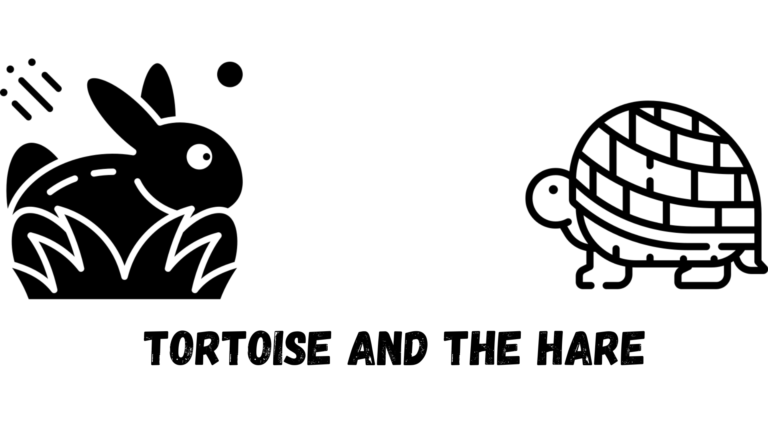The story of the Tortoise and the Hare is one of the most well-known fables, often used to teach the values of perseverance, patience, and humility. At its core, the tale demonstrates how overconfidence can be a downfall, and why slow and steady often wins the race. In a world where speed, instant success, and flashy results are constantly idolized, it’s easy to overlook the underlying lesson this fable imparts: overconfidence can be your undoing.
But in today’s fast-paced world, does this lesson still hold weight? Let’s take a deeper look at how the fable of the tortoise and the hare reflects the dangers of overconfidence in modern-day scenarios, from business to personal growth, and explore how you can avoid falling into the same trap.
The Tortoise and the Hare: A Brief Recap
The fable begins with a boastful hare who challenges the humble tortoise to a race. The hare, confident in its ability to win because of its speed, takes an early lead. However, the hare’s overconfidence leads it to rest midway through the race, believing it has ample time to finish. Meanwhile, the tortoise, unwavering and patient, continues at a steady pace without distraction. Ultimately, the tortoise crosses the finish line first, proving that consistency and humility are often more valuable than overconfidence and haste.
This fable serves as a timeless metaphor for many aspects of life, illustrating that overconfidence in one’s abilities can lead to failure when there is no room for humility or adaptability.
Overconfidence: The Downfall of the Hare
Overconfidence can be defined as an excessive belief in one’s abilities, often leading to underestimating risks, neglecting preparation, or overlooking potential pitfalls. In the fable, the hare’s overconfidence comes from its natural speed. It assumes that its physical advantage will carry it to victory without much effort or consideration of the consequences.
In modern contexts, overconfidence often manifests in several ways, including:
- Business Ventures: Entrepreneurs who believe their ideas are foolproof, failing to conduct proper market research or prepare for competition.
- Personal Growth: Individuals who assume they can achieve a goal without considering the steps and effort required.
- Investment and Trading: Investors who overestimate their ability to predict market movements and fail to diversify their portfolios or manage risk.
The hare’s mistake wasn’t necessarily its ability but its mindset. It overestimated the impact of its strength, ignoring the slow and steady approach of the tortoise. The lesson here is clear: Confidence is crucial, but overconfidence can cloud judgment, leading to complacency and mistakes.
The Tortoise’s Strategy: Slow and Steady Wins the Race
In contrast, the tortoise’s strategy is based on careful consistency. The tortoise doesn’t rely on speed or any extraordinary ability. Instead, it focuses on persistence, steadily moving forward and sticking to its plan. The tortoise doesn’t fall victim to distractions or overestimate its chances of failure.
This approach is what allowed the tortoise to succeed in the race. In real-life scenarios, adopting the tortoise’s mindset can bring success by:
- Focusing on long-term goals: The tortoise teaches the importance of focusing on what can be accomplished over time rather than expecting overnight success.
- Perseverance: Success is often not a sprint but a marathon. Achieving long-lasting results requires patience and resilience.
- Humility: The tortoise does not assume it has any advantage over the hare. It is aware of its limitations, but it also knows that consistent effort will yield results in the end.
Why Overconfidence Is Dangerous: A Deeper Dive
In many situations, overconfidence can lead to disastrous outcomes. Whether you are building a business, investing, or pursuing a personal goal, overestimating your abilities or underestimating challenges can lead to unnecessary risks. Let’s explore how overconfidence can manifest in various areas of life:
In Business and Entrepreneurship
Many entrepreneurs, driven by excitement and optimism, dive into ventures without thoroughly assessing the market, understanding customer needs, or planning for future hurdles. Overconfident entrepreneurs might:
- Fail to conduct thorough research, assuming their idea will automatically succeed without proper validation.
- Overlook competition, believing their product is so unique that no one else could possibly be a threat.
- Undermine risk management by believing they can weather any storm without making necessary adjustments or preparing for downturns.
- In Personal Growth and Development
Overconfidence can also hinder personal development. People who overestimate their abilities may:
- Skip crucial learning steps, assuming they know everything already.
- Neglect self-improvement by focusing too much on their current skills and not adapting to changing environments.
- Suffer from burnout by taking on too many responsibilities, thinking they can handle everything at once.
- In Investing and Financial Decisions
Financial markets are known for their volatility, and many investors have learned the hard way that overconfidence can lead to significant losses. Overconfident investors may:
- Make reckless investment decisions, ignoring risk management principles and assuming they can predict market movements accurately.
- Fail to diversify their portfolios, believing they have a “sure bet” or single investment strategy that will work indefinitely.
- Overtrade or take on excessive leverage, convinced they can handle any potential losses.
A Comparative Chart: Tortoise vs. Hare
| Attribute | Tortoise (Steady Strategy) | Hare (Overconfident Strategy) |
| Speed | Slow and steady, but consistent | Fast, but prone to overestimating its ability |
| Risk Management | Focused on careful planning and patience | Often neglects risk in favor of quick results |
| Focus | Maintains a steady pace, unwavering in the face of obstacles | Distracted by overconfidence, loses focus easily |
| Goal Achievement | Achieves long-term success by avoiding shortcuts | Likely to fail due to taking unnecessary risks |
| Humility | Aware of limitations and adapts accordingly | Overestimates own abilities, dismisses risks |
| Success | Steady and consistent progress towards the goal | Potential for failure due to complacency and arrogance |
How to Avoid Overconfidence and Adopt the Tortoise’s Strategy
To thrive in today’s competitive world, we must learn to balance confidence with a healthy understanding of our limitations. Here are some practical strategies to avoid overconfidence:
Embrace Realistic Goal Setting
Setting achievable, long-term goals will keep you grounded. Break your larger goals into smaller, manageable tasks, and focus on steady progress rather than rushing toward an outcome.
Constant Learning and Self-Reflection
Avoid the pitfall of thinking you know everything. Continuous learning and self-reflection are key to adapting to new challenges and improving over time. Seek feedback from others and always be open to constructive criticism.
Avoid Underestimating Risks
Recognize that there will always be risks in any venture. Overconfident individuals often underestimate these risks, leading to poor decision-making. Conduct thorough research, gather information, and consider multiple perspectives before taking action.
Cultivate Patience
Patience is a powerful trait that allows you to manage expectations and work towards long-term success. Trust the process, stay focused, and avoid the temptation to rush for instant rewards.
Mindful Decision-Making
When faced with a decision, consider all potential outcomes carefully. Make decisions based on facts, data, and careful analysis, rather than impulse or overconfidence.
Conclusion
The tortoise and the hare fable has stood the test of time because its lessons are timeless. The story offers a clear message: overconfidence can be your downfall, and slow, consistent effort often leads to greater success. While confidence is an important trait, it must be tempered with patience, humility, and careful planning. In every aspect of life—from business ventures to personal growth—adopting the tortoise’s steady and deliberate approach can help you avoid the mistakes of the overconfident hare.
So, the next time you’re faced with a challenge, remember: it’s not about how fast you can go, but how carefully you pace yourself. As the tortoise proved, slow and steady wins the race.

